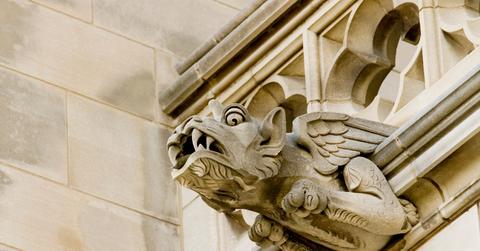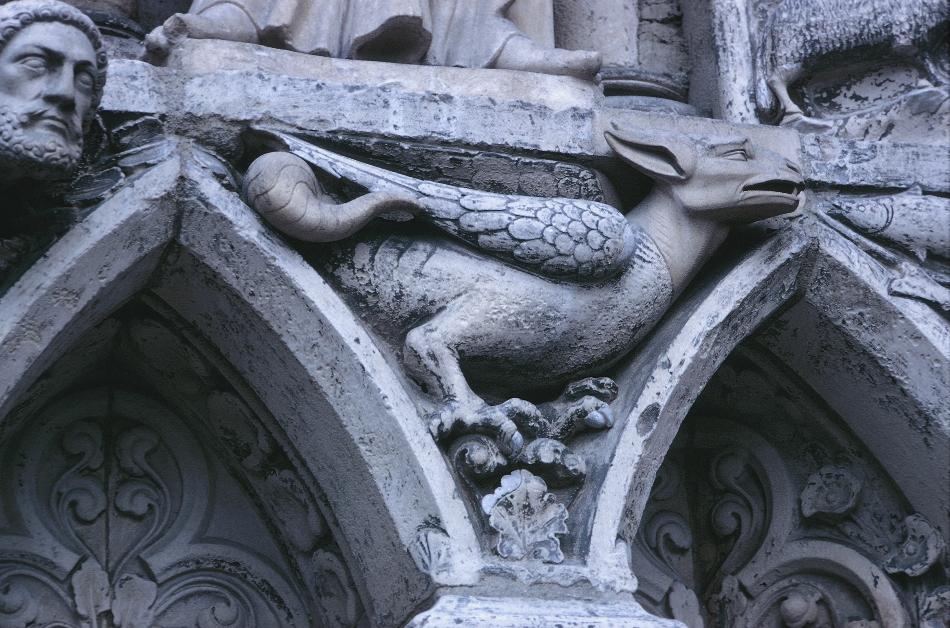Have You Ever Wondered Why Some Churches Have Gargoyles?
Published July 23 2023, 10:30 a.m. ET

Ah, gargoyles, or as I like to think of them, the quirky, gnarly, ghoulish, guardians of churches, are the fascinating and often perplexing stone creatures that perch atop churches and have been an integral part of architectural history for hundreds of years.
If you've ever wandered the streets of a historical European town or gazed upon the towering cathedrals, you've probably come face-to-face with these mysterious creations.
If you have come across these religion-affiliated figures, you might wonder why churches, those places of worship and solemnity, would be adorned with such peculiar stone figures, but we're about to unlock the cryptic secrets behind these fantastical beasts.
There are many theories behind these statues, and if you're a fan of mysterious storytelling, gargoyles are right up your alley.

Some believe that these stone creatures represent the battle between good and evil, each grotesque expression capturing a frozen moment of this eternal struggle. From fierce determination to cunning grins, the variety of expressions on these architectural oddities adds to their allure and enigma.
Perhaps they were meant to encourage deep contemplation or inspire awe in the hearts of churchgoers.
So, why do churches have gargoyles?
While it may seem like an odd pairing, these grotesque-looking gargoyles were not just for aesthetic flair. Imagine you're a medieval architect constructing a grand cathedral. Your goal is not just to create a magnificent structure but to ensure its safety and longevity.
Enter gargoyles, the supernatural sentinels of churches! Their primary function was to serve as water spouts, directing rainwater away from the building's walls to prevent erosion.
According to Sacred Windows, the word "gurgle" sounds exactly like the sound of water going down the drain, and that aligns with the fact that gargoyles were also used as water spouts. And it's not just a coincidence because the same fact applies to the word for "throat" in all those fancy Romance languages like French, Italian, Spanish, Portuguese, and even Romanian!
That actually makes a lot of sense!
Beyond their practical purpose, churches integrated gargoyles into their designs as symbolic protectors.
Medieval times were rife with superstitions and a strong belief in the supernatural.
Gargoyles were believed to ward off evil spirits, demons, and malevolent forces, which was a big plus for congregations seeking some spiritual backup!

These stone beasts were thought to come alive at night, scaring away anything that dared threaten the sacred space. Can you imagine a better bodyguard than a stone monster with a penchant for nocturnal prowling? Grr!
In the realms of French folklore, the word "gargoyle" finds its roots entwined with the legendary tale of La Gargouille, a malevolent dragon said to have once terrorized the banks of the River Seine in Paris.
With a penchant for unleashing chaos, the mythical creature epitomized the classic fearsome traits of dragons. In dire need of salvation, the townsfolk tried to find solace in a medieval solution – calling upon Saint Romain, the esteemed bishop of Rouen.
Valiantly accepting the challenge, he enticed the scaly fiend out of the river with an audacious deal, offering a condemned prisoner freedom in exchange for being bait. With divine power, the fearless bishop subdued the malevolent creature using the Sign of the Cross. While Saint Romain's methods might raise ethical concerns today, the prisoner had supposedly absolved the diocese of liability.
After the triumphant battle of Good over Evil, the people displayed the dragon's remains in the town's cathedral as a grateful token and a warning to other audacious dragons.
Embrace the captivating origins of "gargoyle." There you have it. If you were ever wondering why the fearless, towering statue seems to cower over holy places of worship, this legend may have just answered your question.